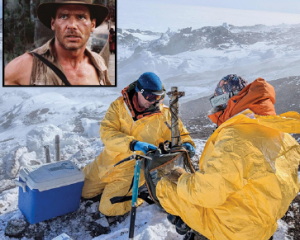KiwiRail's new Chinese-made locomotives may be too heavy for the rail network, have driver visibility problems and be too dangerous for drivers to move between their two cabs, says the Rail and Maritime Transport Union (RMTU).
But KiwiRail says the new locomotives are lighter than the electric locos that run between Hamilton and Palmerston North, cab visibility complies with international standards and denied that they posed any danger for drivers.
The first six of state-owned KiwiRail's 20 new fuel efficient, diesel electric locomotives, costing about $75 million, are due to be running between Auckland, Hamilton and Tauranga before Christmas, with the remaining 14 expected next year.
The DL locomotives have been built by Dalian Locomotive and Rolling Stock, part of the CNR Group to upgrade the ageing stock. The first six were unveiled in Hamilton last week.
RMTU general secretary Wayne Butson said there were concerns about the locomotives because "they look bloody heavy''.
He said the union had tried to get KiwiRail to run them over the weigh bridge but it had not done so and was relying on the maker's specifications.
There were also some visibility issues for the drivers and a risk assessment of the double cab locos found drivers could not walk through the unit because of the voltage hazard and almost everything that moved lacked guards, he said.
KiwiRail's mechanical general manager Lloyd Major said the locos had been weighed and were 105 tonnes, which was lighter than the electric locos (EFs) that currently run between Hamilton and Palmerston North (108 tonnes) and similar to the existing DX fleet.
As for the cab visibility, Mr Major said it complied with USA federal railway standards and was the same as used in a number of other countries.
"One of the key issues is to make the cab as strong as possible to protect the loco engineer against collisions _ as you aware, there are many vehicle drivers who do not obey level crossing warning signs and devices.''
Three RMTU members spent time in China during the design and build of the locomotives and their views were taken into consideration, Mr Major said.
The locomotives had a cab at each end and were not designed for engineers to move from one cab to another.
Loco engineers currently exited the cab to move from one loco to another when locos were used back to back - a longer journey than they would have to make with the new locos, Mr Major said.
Mr Butson said the union was working through the problems with KiwiRail.
It was happy to see the Government investing in rail with the first mainline class locomotives purchased in more than 30 years, but they could have been made at home. If the locomotives had been built in New Zealand they would not have had any issues, he said.
KiwiRail could not confirm a date tonight for the introduction, but said they were going through a normal commissioning process.













